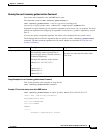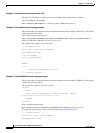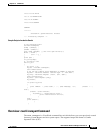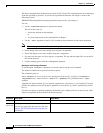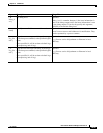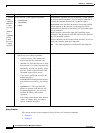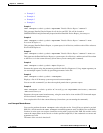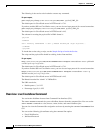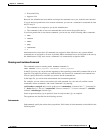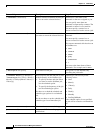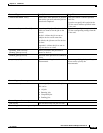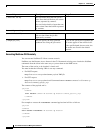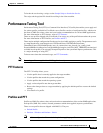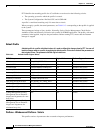
19-99
User Guide for Resource Manager Essentials 4.1
OL-11714-01
Chapter 19 CLI Utilities
CWCLI
• Execution Policy
• Approver List
However, the Administrator must define and assign the command sets to you, in the browser interface.
If you do not have permission to run custom commands, you can run a command or command set from
the CLI only if:
• The command set is assigned to you by the Administrator.
• The command set has at least one command that can be run on the specified device.
If you have permission to run custom commands, you can run any of the following adhoc commands:
• show
• version
• where
• ping
• traceroute
• ?
Administrator level users have all command sets assigned to them. However, only system-defined
command sets are assigned to all users, by default. Other commands have to be assigned to the user by
the Administrator. If any users create a command, it is automatically assigned to them.
Running cwcli netshow Command
The command syntax for running cwcli netshow commands is:
cwcli netshow common_arguments subcommands command_arguments
In the CLI version, you can provide the arguments in the (operating system shell) command line or in an
input file. The input file provides you with flexibility and control over commands and command sets.
You can specify the devices on which you want to run the command sets.
In the input file, you can include subcommands and command arguments.
For example, you can create a new netshow job with command sets, set1 and set2, and the custom
commands, custom command 1 and custom command 2, by entering:
cwcli netshow createjob -u Username -p Password -commandset “Command Set 1”,” Command Set
2” -device Device 1, Device 2 -customcmd “Custom command 1”,” Custom command 2” -schedule
Schedule -scheduletype Schedule Type
Items in square brackets ([]) are optional; items in curly brackets ({}) are required.
The arguments are described in the following sections.
Subcommands
Subcommands specify the actions that you perform. Valid values for subcommands are described in the
following table.



